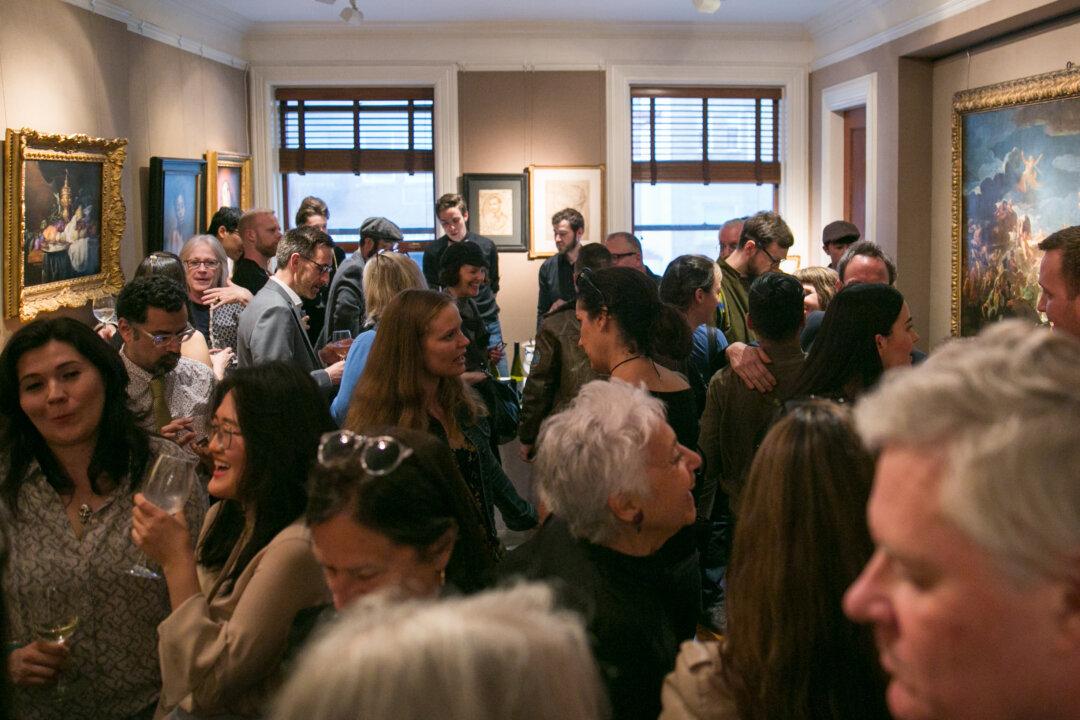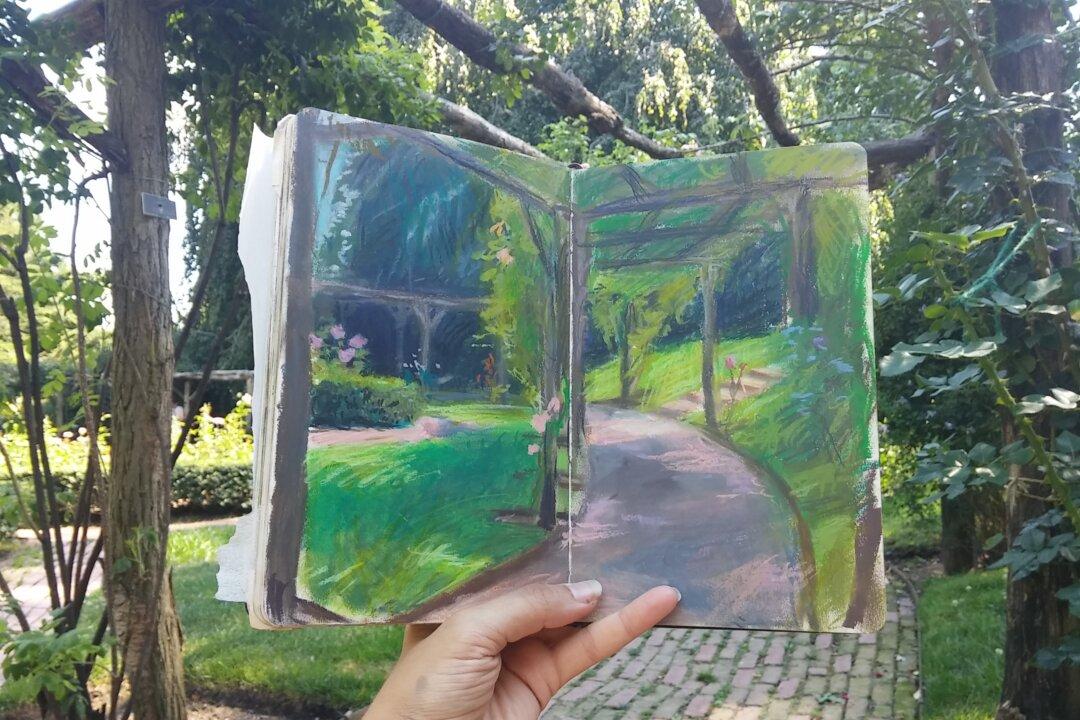NEW YORK—An exquisite conversation has started between the past and the present in “The Unbroken Line: Old and New Masters” exhibition at the Robert Simon Fine Art gallery. Curators often hope that the works they display will “talk to each other.” The drawings and paintings Robert Simon has curated with Grand Central Atelier artists and faculty Colleen Barry and Anthony Baus are definitely talking with each other in endless ways—ranging from gentle whispers and unexpected conviviality to bold statements.
This unprecedented conversation opened to a packed crowd of both young and old, artists, collectors, museum curators, and art lovers alike, on May 10 and will remain open until June 1.
It is the first time the art historian and art dealer Robert Simon has presented works by living artists alongside old master drawings and paintings in his gallery, located half a block from The Metropolitan Museum of Art. It’s not the kind of art show you would find in other historical art galleries on the Upper East Side, in contemporary galleries in Chelsea, in the edgier galleries on the Lower East Side, or in museums like the Museum of Modern Art (MoMA), the Whitney, the Guggenheim, or The Met.






